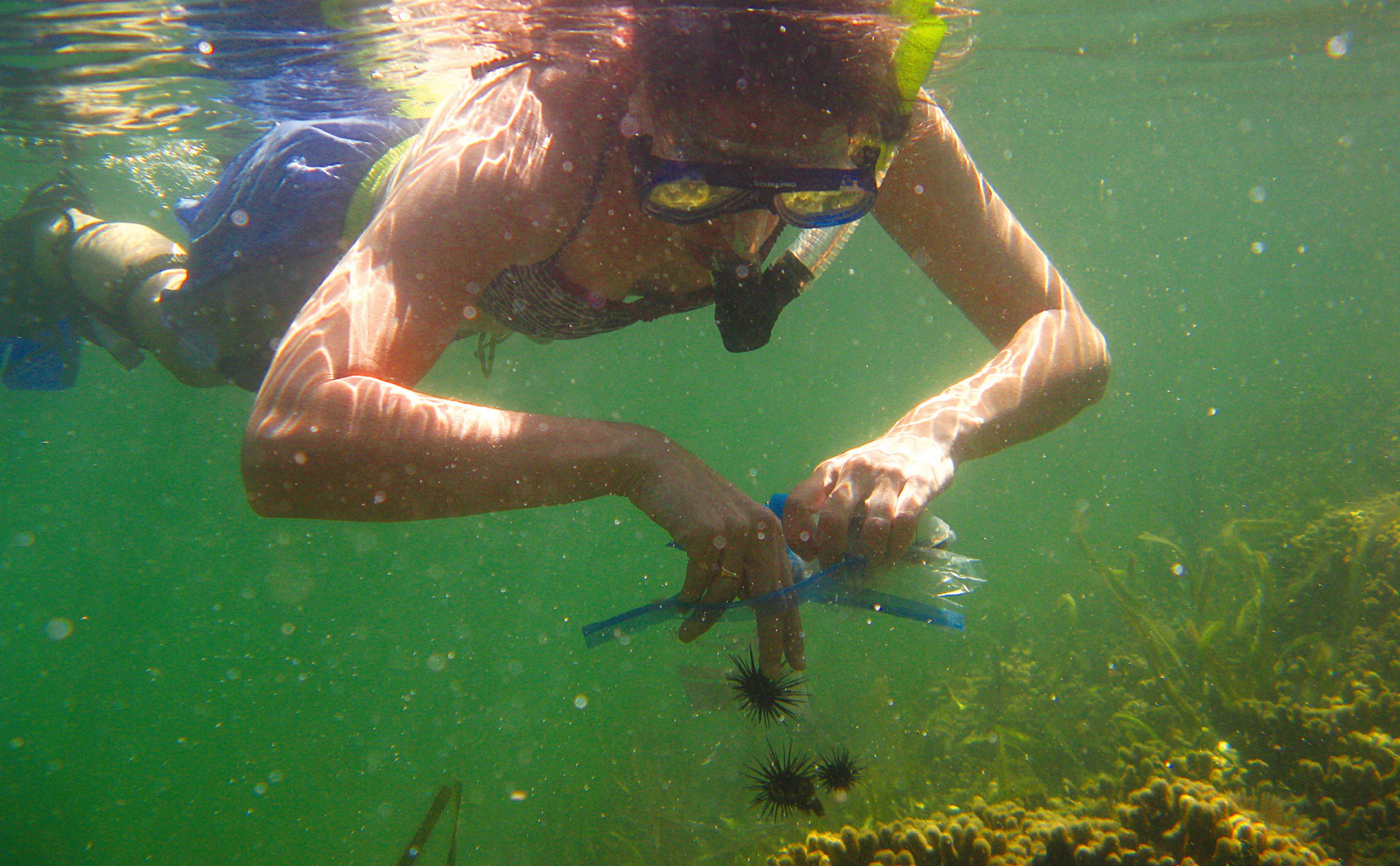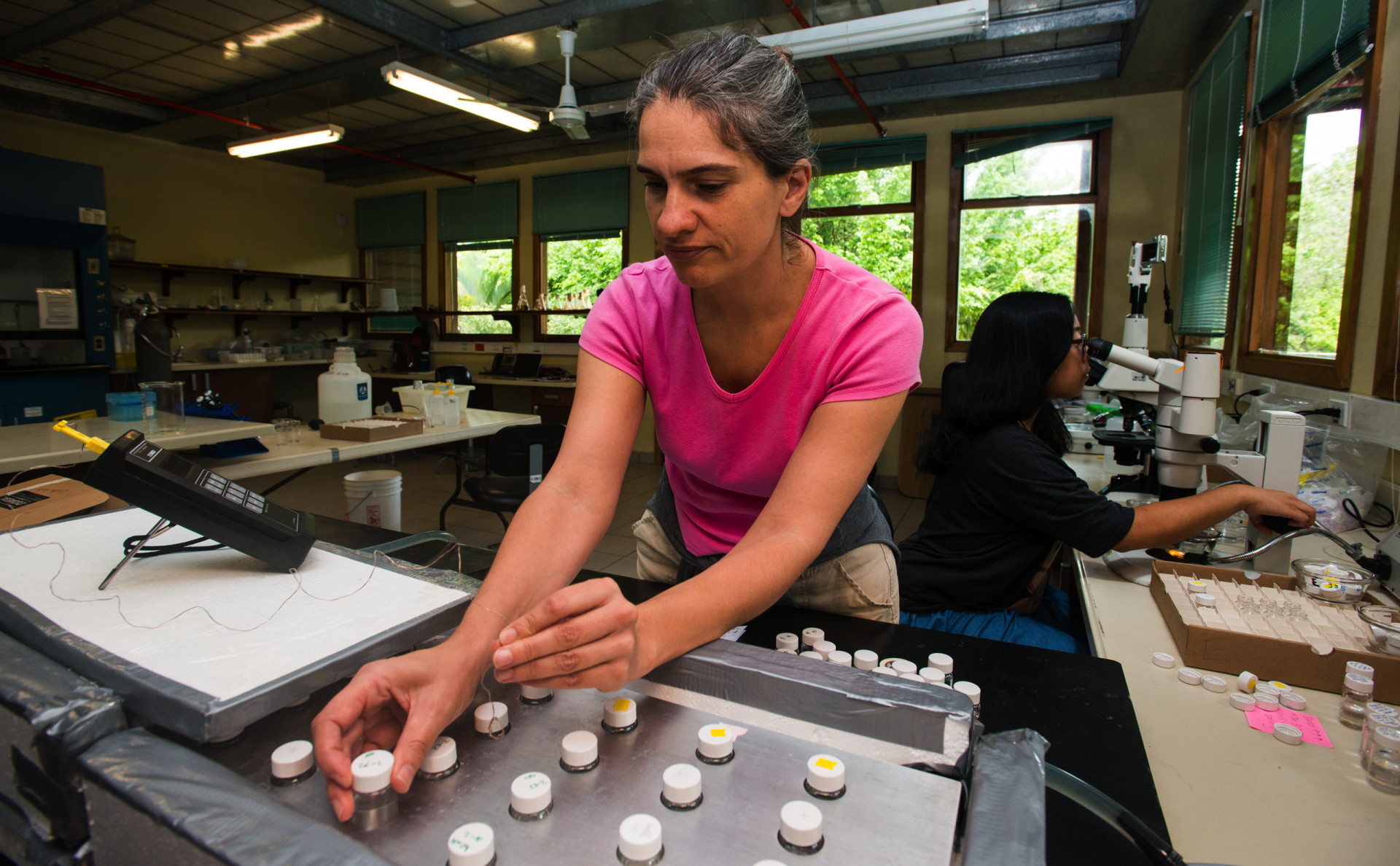Profile: Rachel Collin
Is there an evolutionary point of no return?
Bocas del Toro, Panama
A Chilean sea snail appears to have tried two forms of development and decided to turn back before it was too late.
Snails develop in two ways. Some species spew tiny eggs into the water that hatch to become swimming larvae. Others lay fewer, larger eggs that either are brooded by mom or develop inside protective capsules. These direct developers cannot swim. Direct developers may have crossed an evolutionary threshold with profound consequences: they may be more likely to go extinct because they cannot move as far.
Staff scientist Rachel Collin questions this conventional wisdom. She says some direct developers may evolve back into larval developers. “How far down that path can you go and still pull back?” asks Rachel.
Some direct developers have clearly gone too far, while others go through a larval stage while in the egg capsule, suggesting they could still switch development modes. The Crepipatella fecunda sea snail that Rachel studies in Chilean waters appears to have recently - in evolutionary terms - switched from direct developer to a larval developer and could help Rachel answer that question.

